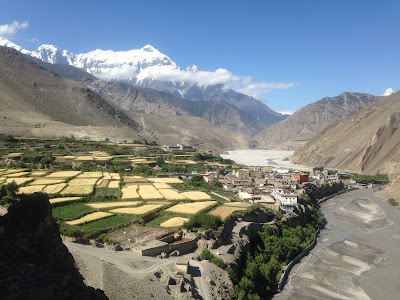Sunflower Family
The compositae are perhaps the largest family of
Dicotyledons, widely distributed in all parts of the world and indeed the
dominant family in the Himalayan. In addition to the well known sunflower the
family includes many other garden plants like cosmos aster zennia,
chrysanthemum, dahlia, etc. On the Himalayan the family occurs right from the
timberline to the highest limits of existence of plants. They are however best
developed in semi – arid and high steppes and some of them at extreme altitudes
are remarkable for the milky latex aromatic and cottony woolly leaves. The most
striking chhhhharacter of the family is its inflorescence a capitulum ar head.
Numerous small flowers called florets, are arranged close together on the
flattened disc like top of the main inflorescence axis, often with leafy bracts
forming an involucres and clustered in whorls below. The outer row of florets
has the outer petal greatly enlarged as a brightly colored ligule to form a sort
of an outer ring of rayed perals for the compound mass. The central mass of
florets, called disc florets, consists of tubular florets with inferior ovary
often
Compositae is
dominant family in the Himalayan marigold growing plentifully near the phewa
lake, pokhara in Nepal.




Comments
Post a Comment